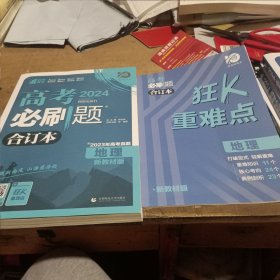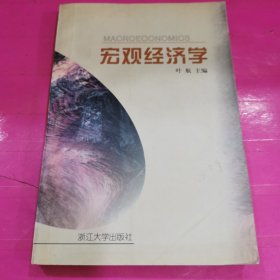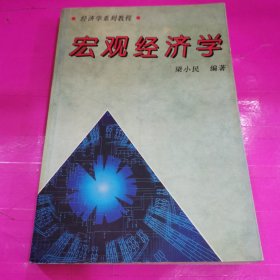
宏观经济学 Macroeconomics 5e
¥ 188 6.3折 ¥ 300 八五品
仅1件
湖南湘潭
认证卖家担保交易快速发货售后保障
作者Robert E.、Taylor、John B. Hall 著
出版社Oversea Publishing House
出版时间1997-01
装帧精装
货号e58-3
上书时间2024-03-20
- 在售商品 暂无
- 平均发货时间 10小时
- 好评率 暂无
- 店主推荐
- 最新上架
商品详情
- 品相描述:八五品
图书标准信息
- 作者 Robert E.、Taylor、John B. Hall 著
- 出版社 Oversea Publishing House
- 出版时间 1997-01
- ISBN 9780393968354
- 定价 300.00元
- 装帧 精装
- 开本 16开
- 纸张 胶版纸
- 【内容简介】
-
Book DescriptionIncorporating recent advances in modern macroeconomics, this fifth edition offers increased coverage of long-run analysis and a new treatment of US policy rules and price adjustment. The authors provide a thorough account of the Solow Growth Model, develop the insights of endogenous-growth theory, explain the role of fiscal and monetary policy in the long run, and present a structural look at unemployment. Having examined the US monetary system and the Fed's policy rule, and on fluctuations in inflation and output, the book goes on to discuss how the policy rule is integrated into the general model of the economy. Also available are a corresponding study guide, instructor's manual, and test-item file.
作者简介:
Robert E.Hall is professor of economics at Standford University and also Senior Fellow at the Hoover Institution. He received his B.A.from the University of California, Berkeley, and his Ph.D.from the Massachusetts Insititute of Technology. He taught at U.C.Berkely and at MIT before going to Stanford. Professor Hall is also chairman of the Business Cycles Dating Committee of the National Bureau for Economic Research, which maintains the official chronology of the U.S. business cycle. - 【目录】
-
1 INTRODUCTION
1 Economic Growth and Fluctuations
1.1 Macroeconomics and Its Uses
1.2 Recent Macroeconomic Performance
EMPLOYMENT
INFLATION
INTEREST RATES
1.3 Explaining Economic Growth and Fluctuations: A Preview THE MODEL OF LONG-RUN GROWTH
Growth Rates
THE MODEL OF FLUCTUATIONS
1.4 Currents of Thought in Macroeconomics
How Did Today's Macroeconomists (~ome to Study Economics?
1.5 The Macroeconomic Model Used in This Book Review and Practice
MAJOR POINTS
KEY TERMS AND CONCEPTS
QUESTIONS FOR DISCUSSION AND REVIEW
PROBLEMS
MACROSOLVE EXERCISES 24
2 Measuring Economic Performance
2.1 Gross Domestic Product
2.2 Measuring GDP through Spending
CONSUMPTION
INVESTMENT
GOVERNMENT
PURCHASES
IMPORTS AND EXPORTS
THE RECENT
COMPOSITION OF SPENDING
Bringing Astronomical Numbers I)own to Eanh
WHICH SPENDING ITEMS SHOULD BE INCLUDED?
REAL GDP
Chain-Weighted GI)P
2.3 Measuring GDP through Production: Value Added
2.4 Measuring GDP through Income
2.5 Saving and Investment
SAVING AND INVESTMENT IN AN OPEN ECONOMY
2.6 Transactions with the Rest of the World: The Balance of
Payments Accounts and the Exchange Rate
THE EXCHANGE RATE
2.7 Measuring Inflation
PRICE INDEXES
DEFLATORS 48
2.8 Measuring Employment and Wages
HOURS PER WEEK AND TOTAL HOURS
Review and Practice
MAJOR POINTS
KEY TERMS AND CONCEPTS
QUESTIONS FOR DISCUSSION AND REVIEW
PROBLEMS
MACROSOLVE EXERCISES
2 LONG-RUN FUNDAMENTALS
Economic Growth
3.1 The Determinants of Economic Growth
LABOR
CAPITAL
TECHNOLOGY
THE PRODUCTION FUNCTION
3.2 Full Employment and Potential GDP
THE DEMAND FOR LABOR
THE SUPPLY OF LABOR
FULL EMPLOYMENT
POTENTIAL GDP
3.3 The Solow Growth Model
SAVING AND BALANCED GROWTH
THE EFFECT OF SAVING
ON GROWTH
3.4 The Growth Accounting Formula
NEW RESEARCH IN PllACI'lCl! Convergence or Dispersion of Per Capita Income Around the World?
HISTORICAL GROWTH ACCOUNTING
EXOGENOUS
TECHNOLOGICAL CHANGE
3.5 Endogenous Growth Theory
A PRODUCTION FUNCTION FOR TECHNOLOGY
INCREASING
THE LONG-RUN GROWTH RATE
3.6 Policies to Stimulate Growth
NEYg: RESEARCH IN PARACTICE Enclogenot~s (;rowth Theory and h-tlernalional Trade Liberalization
POLICIES TO IMPROVE TECHNOLOGICAL GROWTH AND PRODUCTIVITY
POLICIES TO STIMULATE CAPITAL FORMATION
POLICIES TO INCREASE LABOR SUPPLY
3.7 Wages and the Labor Productivity Slowdown
THE LABOR PRODUCTIVITY SLOWDOWN
……
3 ECONOMIC FLUCTUATIONS
4 MICROFOUNDATIONS OF MACROECONOMICS
5 MACROECONOMIC POLICY
Glossary
Index
点击展开
点击收起
相关推荐
— 没有更多了 —
































以下为对购买帮助不大的评价